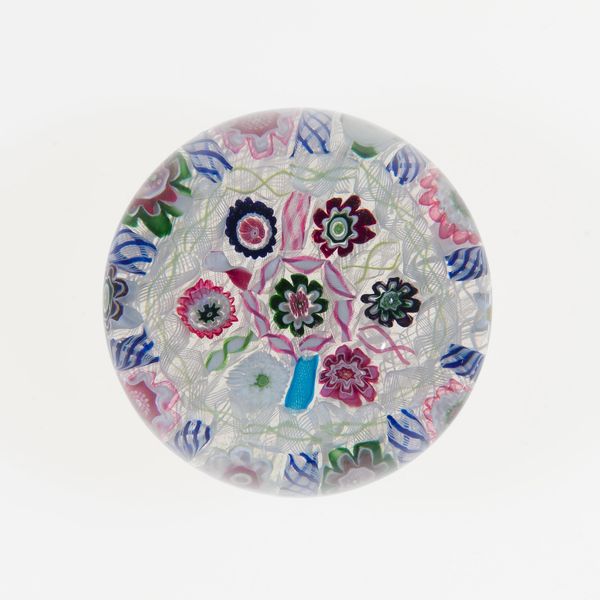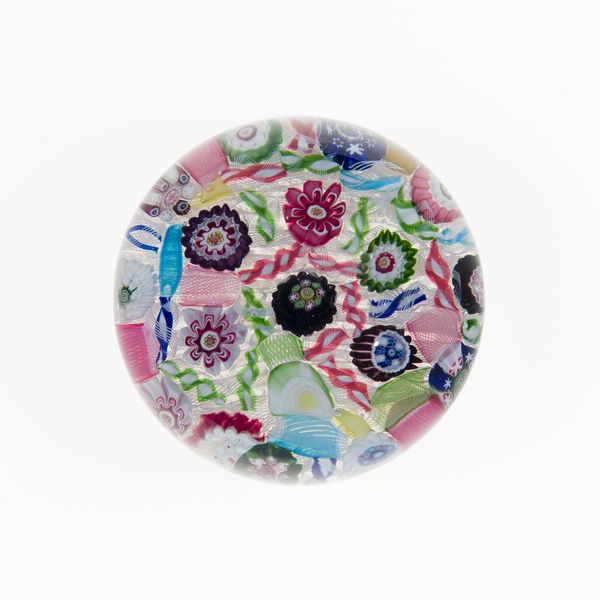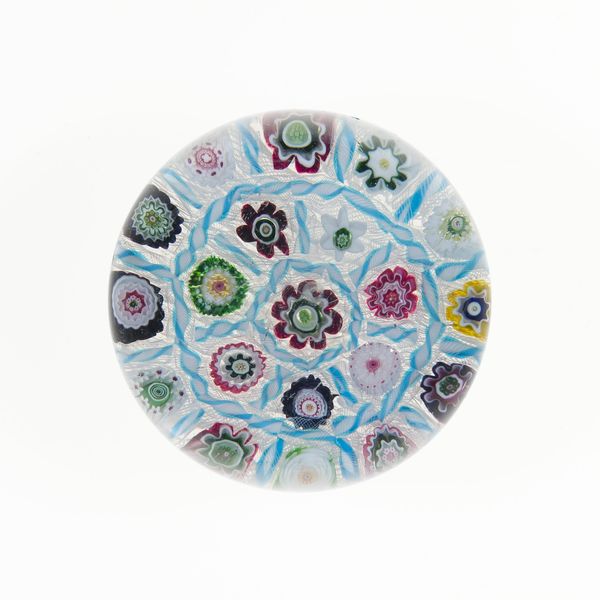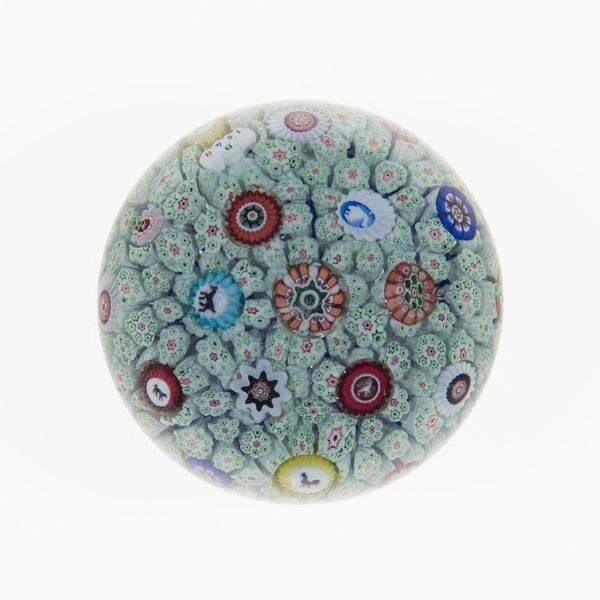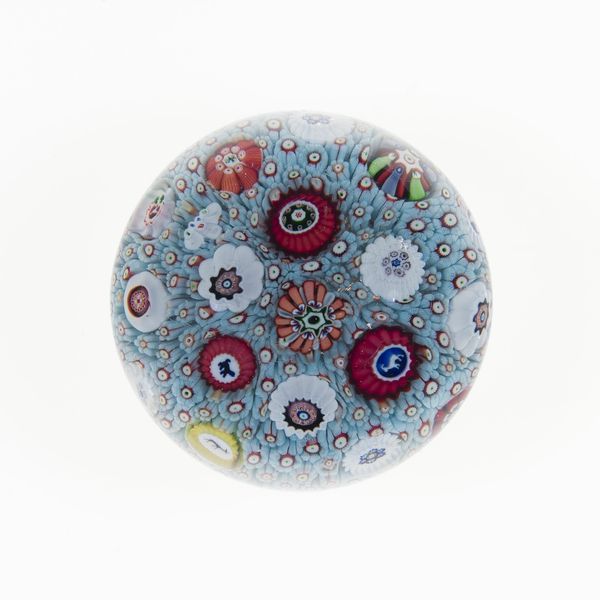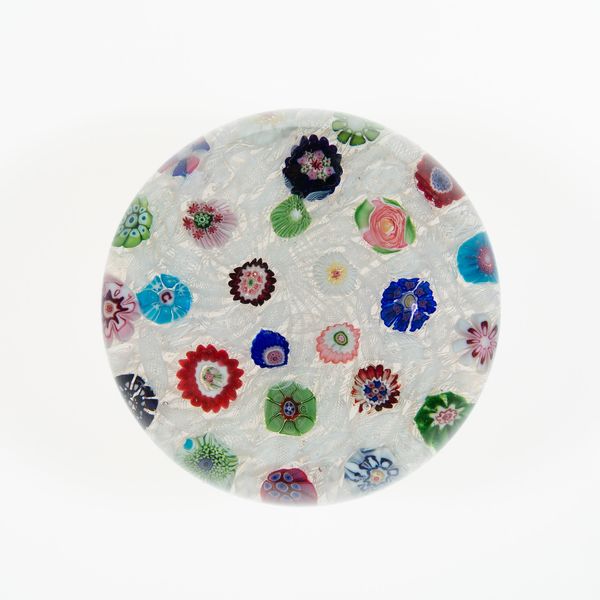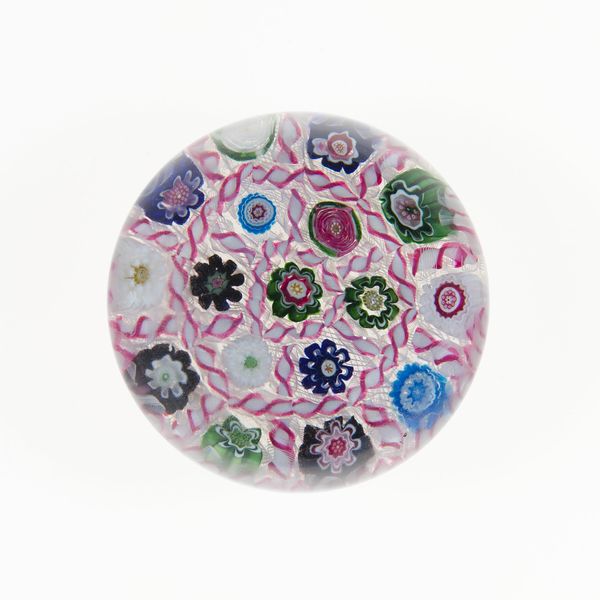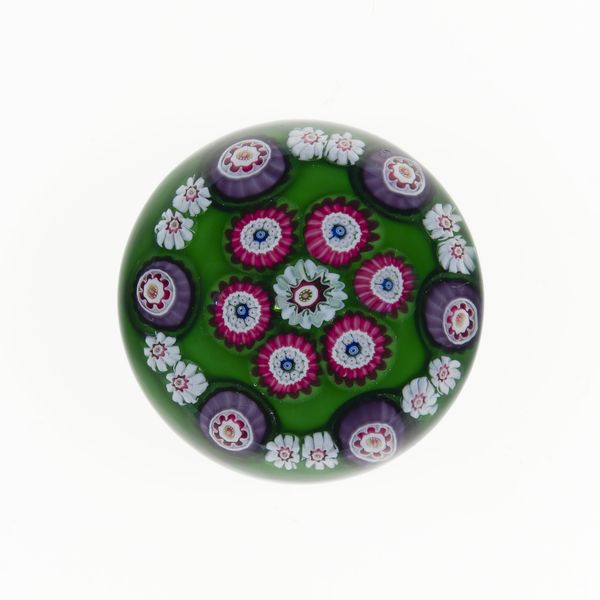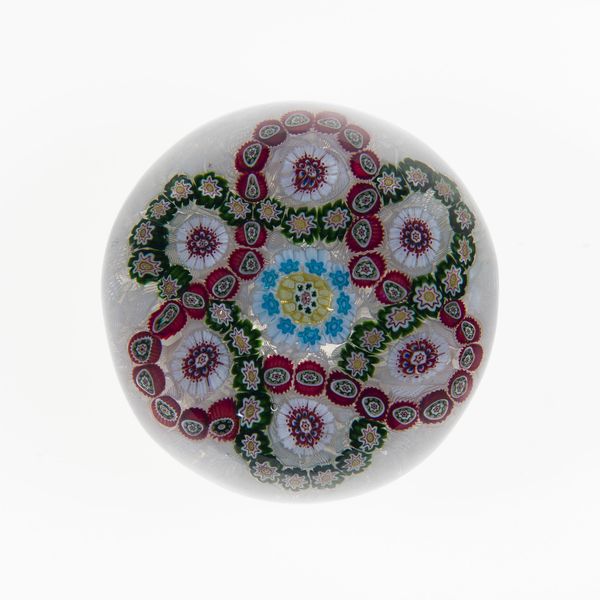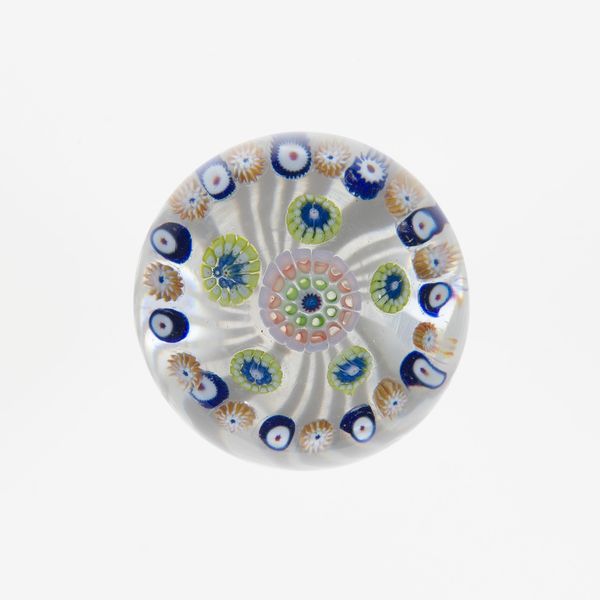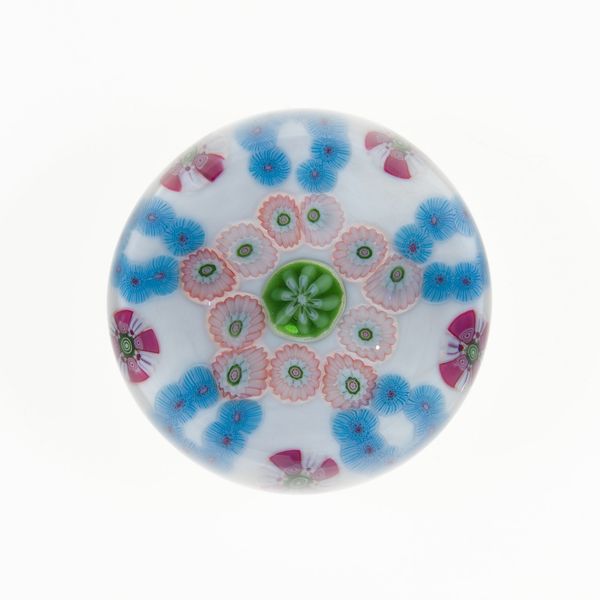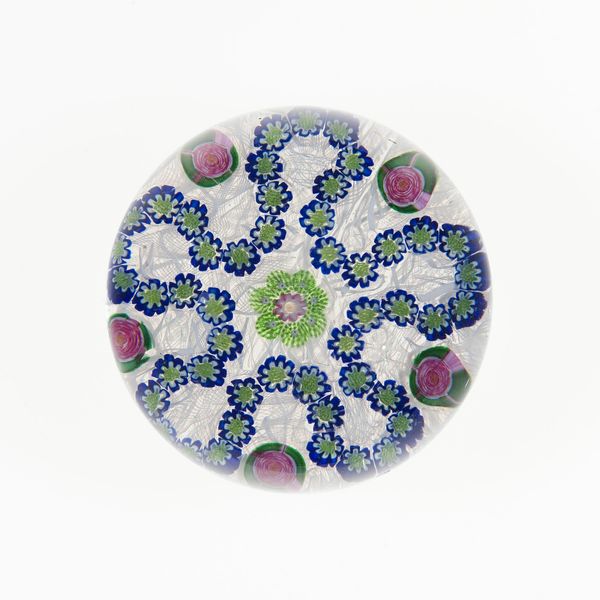
paper, glass
#
product photograph merchandise
#
product studio photography
#
circular oval feature
#
enamel pin design
#
decorative element
#
egg art
#
cake food
#
circular organic
#
round design
#
paper
#
glass
#
round circular shape
#
decorative-art
Dimensions: 2 7/8 in.
Copyright: Public Domain
Editor: Here we have a nineteenth-century paperweight, attributed to the Clichy Glasshouse. It’s made of glass, and the composition has all these incredible colorful florets suspended inside. It reminds me a bit of those fancy candies. What should we be thinking about when looking at this piece? Curator: I am interested in how glass transformed from utilitarian object to decorative luxury good within industrial capitalism. The complex process of creating these paperweights - the precise layering of glass canes, the heatwork - speaks to a particular type of labor, doesn’t it? Consider the specialized skill required versus the eventual function: merely to hold down paper. Editor: So, the value isn’t just in its beauty, but in the labor that goes into it? Curator: Precisely. And more than just individual labor. We have to examine the glassmaking industry itself. What were the working conditions? Who was consuming these objects, and what did owning them signify about social class? These paperweights represent a confluence of technological advancements, industrial production, and a rising middle class eager to display their wealth. What do you think it would mean to own one? Editor: It would say, "I appreciate craftsmanship," or, maybe, "I have disposable income". I hadn't really considered the class aspect. Curator: These objects prompt a deep investigation into the materiality of glass itself and how its manipulation can reflect broader social and economic forces. A seemingly simple object contains a wealth of information about production, consumption, and the evolving relationship between art and industry. Editor: Thinking about it as a product of industrial processes, the way it intertwines labor, class, and beauty really shifts my understanding. Thanks! Curator: Absolutely. The materials always tell a story, if we know how to listen.
Comments
No comments
Be the first to comment and join the conversation on the ultimate creative platform.
